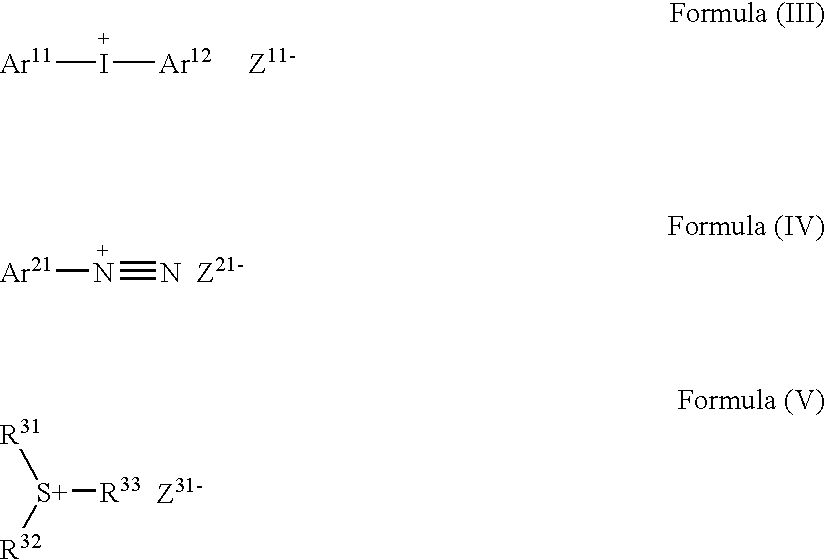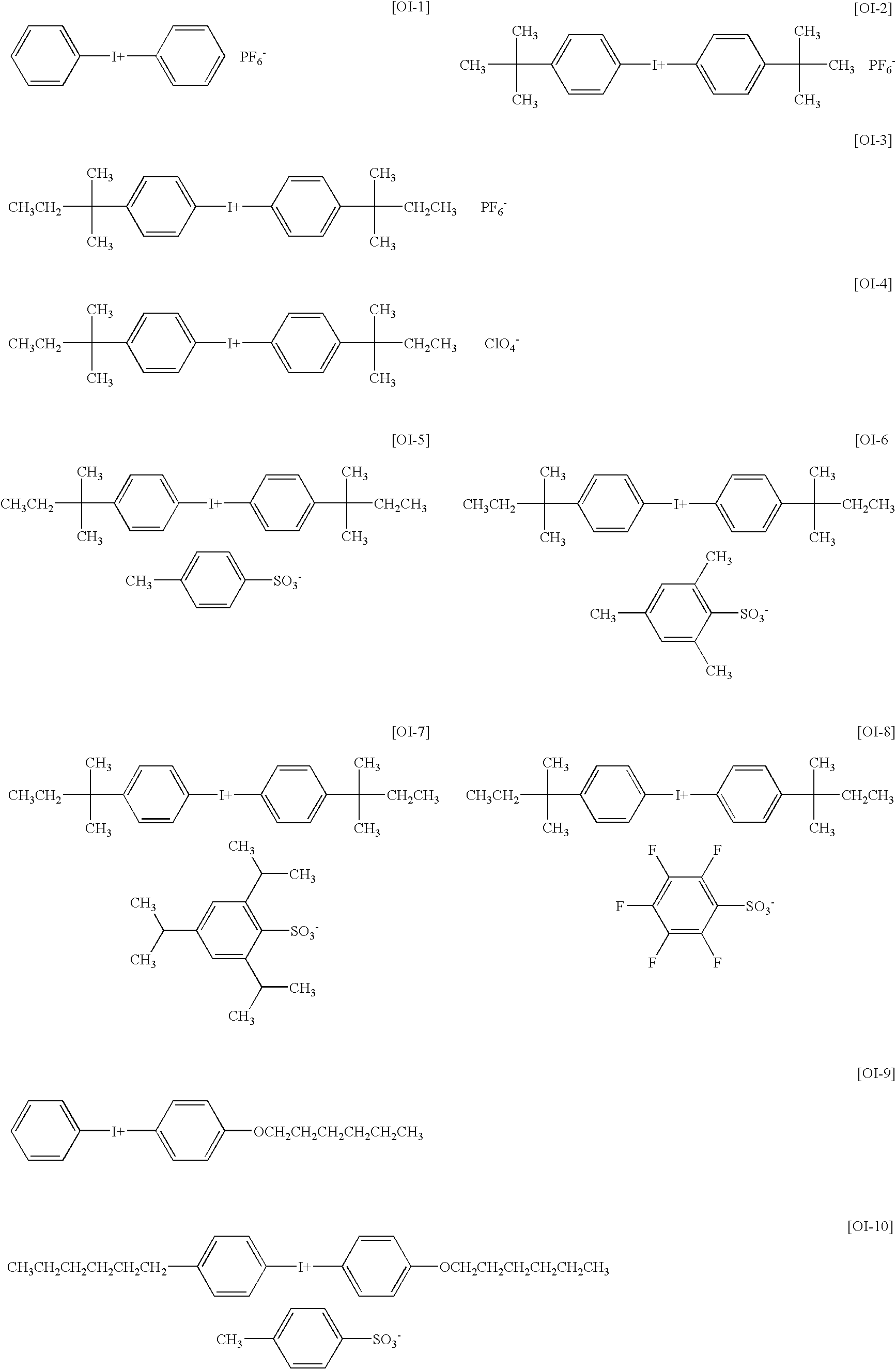Planographic printing plate precursor
a technology of planographic printing plate and precursor, which is applied in the direction of photosensitive materials, instruments, photomechanical equipment, etc., can solve the problems of reducing hydrophilicity and stains in the prints, and achieve the effects of preventing effective staining, high mobility, and reducing stains
- Summary
- Abstract
- Description
- Claims
- Application Information
AI Technical Summary
Benefits of technology
Problems solved by technology
Method used
Image
Examples
example 1
Preparation of Support with Hydrophilic Surface:
Formation of an Intermediate Layer:
[0173]Using a rod bar #17, a photopolymerizing composition stated below was applied onto a PET film (by Toyobo, trade name: M4100) having a thickness of 0.188 mm, and dried at 80° C. for 2 minutes. Next, the coated film surface was precured by exposing it to a 400 W high-pressure mercury lamp (by Riko Kagaku Sangyo, trade name: UVL-400P) for 10 minutes.
[0174]The photopolymerizing composition is as follows:
[0175]
Allyl methacrylate / methacrylic acid copolymer (80 / 20 by mol, 4 gmolecular weight 100,000)Ethyleneoxide-modified bisphenol A diacrylate (by Toa Gosei, 4 gtrade name: M210)1-Hydroxycyclohexyl phenyl ketone1.6 g1-Methoxy-2-propanol 16 g
Formation of Hydrophilic Surface:
[0176]The intermediate layer-coated film was dipped in an aqueous monomer solution containing 10% by weight of sodium styrenesulfonate and 0.01% by weight of sodium hypochlorite, and exposed to a 400 W high-pressure mercury lamp in...
example 2
[0190]An aluminum sheet processed according to the method mentioned below was prepared and used in place of the PET film for the support, and acrylic acid was used in place of sodium styrenesulfonate for forming the hydrophilic surface. A recording layer and an overcoat layer were also formed on the support in the same manner as in Example 1. The result was a negative planographic printing plate precursor 2 of Example 2.
Method of Processing the Aluminum Sheet:
[0191]An aluminum sheet (of an aluminium alloy of at least 99.5% aluminium, containing 0.30% Fe, 0.10% Si, 0.02% Ti and 0.013% Cu) having a thickness of 0.30 mm was degreased by washing it with trichloroethylene. Using a nylon brush, its surface was sand-grained with an aqueous suspension of 400-mesh pumice, and then throughly washed with water. The sheet was etched by dipping it in an aqueous 25 wt. % sodium hydroxide solution at 45° C. for 9 seconds, then washed with water, and further washed by dipping it in 2 wt. % nitric a...
example 3
[0193]An aluminum sheet support having a hydrophilic surface grafted with acrylamide was prepared. The same aluminum sheet as in Example 2 was used in place of the PET film for the support, and acrylamide was used in place of sodium styrenesulfonate for forming the hydrophilic surface. A recording layer and an overcoat layer were also formed on the support in the same manner as in Example 1. The result was a negative planographic printing plate precursor 3 of Example 3.
Evaluation of Planographic Printing Plate Precursors:
[0194]The negative planographic printing plate precursors 2 and 3 of the invention were exposed and developed in the same manner as in Example 1, and the resulting printing plates were tried in the same printer as in Example 1. The prints obtained were checked for stains.
[0195]The printing plates from the precursors 2 and 3 also gave high-quality prints with no background stains. With each printing plate still set therein, the printer was made to produce 20,000 prin...
PUM
| Property | Measurement | Unit |
|---|---|---|
| thickness | aaaaa | aaaaa |
| thickness | aaaaa | aaaaa |
| thickness | aaaaa | aaaaa |
Abstract
Description
Claims
Application Information
 Login to View More
Login to View More - R&D
- Intellectual Property
- Life Sciences
- Materials
- Tech Scout
- Unparalleled Data Quality
- Higher Quality Content
- 60% Fewer Hallucinations
Browse by: Latest US Patents, China's latest patents, Technical Efficacy Thesaurus, Application Domain, Technology Topic, Popular Technical Reports.
© 2025 PatSnap. All rights reserved.Legal|Privacy policy|Modern Slavery Act Transparency Statement|Sitemap|About US| Contact US: help@patsnap.com



